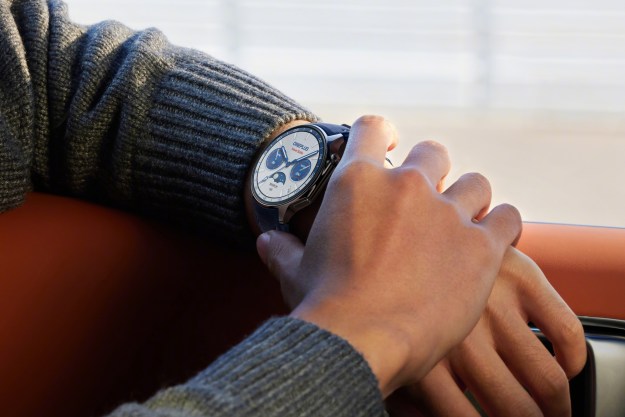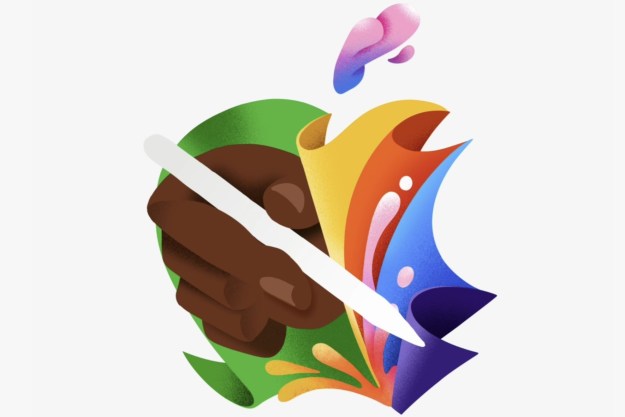 This year, top-end smartphones (except the iPhone) needed a big screen and a quad-core processor. Anything less, and they became relegated to the dreaded mid-range, where it’s all about compromises to maintain a reasonable price.
This year, top-end smartphones (except the iPhone) needed a big screen and a quad-core processor. Anything less, and they became relegated to the dreaded mid-range, where it’s all about compromises to maintain a reasonable price.
But as we move closer to 2013, manufacturers are going to need something else to get us all excited, and persuade us to upgrade our phones when the time comes. Marketing 101 says for that to happen, a number has to go up. We’ve got four cores in our processors and every possible screen size from 4-inches to 5.3-inches, leaving only the screen resolution with immediate potential for upgrade.
Next year, it appears, will be the year of the 1080p smartphone. Several of those quad-core, big screen phones are going to have 1080p displays, taking the resolution to 1920 x 1080 pixels, up from 720p, or 1280 x 720 pixels. Most of you already own a television that provides a 1080p picture, having been sold on its pin-sharp image and glorious colors. But we are willing to bet that your TV is almost certainly a minimum of 32-inches in size. Anything smaller, and the glory of 1080p becomes more difficult to discern. What then, is the point of a 5-inch, 1080p screen, you may wonder?
The marketing push for 1080p smartphones is almost certainly going to make them sound like a visual nirvana, with sharper video playback, beautifully realized photographs and crisp mm text. The pixel density, another figure that’s growing in popularity in marketing circles, is around 440 pixels per inch for a 1080p, 5-inch screen. As a comparisomn, the iPhone’s Retina display has 326ppi.
Will it make a difference?
According to Dr. Raymond Soneira, the CEO of DisplayMate, who spoke to ArsTechnica.com recently, it depends on the person looking at the screen as much as the content itself.
Providing what’s being viewed has been designed for a 1080p display, it should look better, and that includes video and icons, plus like a mid-20-inch 1080p computer monitor, text will look sharper too. However, everything from viewing distance to how good your eyesight is will have an affect, plus non-1080p content such as scaled video, pictures and websites probably won’t look all that different than it would on a 720p screen.
If we go back to 2010, people were having a similar discussion, except the screen sizes and hardware were different. A report in the LA Times says the benefits for watching television and video in 1080p on a relatively small screen were “minuscule.” It quotes the editor of HDGuru.com, who said “to see 1,080 vertical lines of resolution you need a TV of about 46-inches… at 26-inches, forget it, you won’t tell the difference.”
The caveat is when the display is used as a computer monitor, as the difference between text and graphics in 720p and 1080p is noticeable. As smartphones are used for all of the above — text, graphics, pictures, video and so on — those equipped with a 1080p screen will be great in some situations, and no different in others.
We spoke to Joel Silver, President of Imaging Science, the company behind the ISF certification and video calibration experts, who said a display’s resolution is last on his list of important parameters for a great-looking image; placing dynamic range, color saturation, and color accuracy above it.
He offers up the Apple iPad’s Retina screen as proof, passing the resolution off as a “simple marketing ploy,” and saying the “dynamics and accuracy” are the real reason it catches — and impresses — our eye.
In essence, it’s going to be down to how the manufacturers calibrate their 5-inch, 1080p screens whether there will be a marked improvement over existing 720p screens.
 The curse of 1080p
The curse of 1080p
Adding a 1080p display to a smartphone is going to have its drawbacks, and it could drain both the phone’s battery and your wallet. Let’s look at a 1080p screen’s power needs first. It’s logical really, as a higher resolution makes more demands from the GPU, which in turn needs more power to help it cope.
As an example, the Apple iPad 4‘s screen has a higher than 1080p resolution, and a battery rated at 42.5-watt hours, while the iPad 2 has a less than 720p resolution and a 25-watt hour battery. Yet both provide the same 10-hours of use before needing a recharge. Coincidence?
Any smartphone with a 1080p screen is probably going to need a quad-core processor, a meaty GPU and 4G LTE connectivity in certain regions. It’s going to use plenty of power, so it’s going to need a serious battery too. But these days, such things mean more weight and increased size, so they’re rarely included — but they could be essential this time.
One saving grace here could come from Sharp, as its IGZO panels work in a way that reduces power consumption, which could see things even out. However, not every 1080p smartphone will make use of them.
Then there’s the cost. These screens are going to be large, at least 5-inches, and feature cutting-edge technology, neither of which make for a bargain price.
Future 1080p smartphones
So which companies are busy developing 1080p screen for use on new smartphone/tablet hybrids? The short answer is, almost all of them.
Back in May 2012, LG was the first to show off a prototype 5-inch, 1080p screen, which it said had a pixel density of 440ppi. Since then it has been joined by Sharp and its aforementioned IGZO panel, plus this week, Samsung has said it will put small, 1080p screens into mass production next year too.
Then we have companies with actual 1080p phones already announced. The HTC J Butterfly and the lesser known Oppo Find 5 are both 5-inch smartphone/tablet hybrids with 1080p screens, but are relegated to Japan and China respectively. Then there’s Sharp’s Aquos SH930W with the same screen, which will be out in Russia very soon.
Verizon and HTC have taken the covers off the Droid DNA this week, which is a re-branded version of the J Butterfly, and the first tablet/smartphone hybrid to boast a 1080p screen to be launched in the USA. It’s set for release on November 21.
Finally, there are several rumors floating around, including images of the 1080p Sony Yuga and two ZTE and Huawei products, going under the names of the ZTE Nubia Z5 and the Huawei Ascend D2.
So, that’s at least seven different smartphone/tablet hybrids with 1080p screens that we know of already. None have gone on sale yet either, meaning we can expect the tally to increase as we get closer to the end of the year.
In the United States, it looks like HTC will beat the competition to be the first to announce a 1080p phone with its J Butterfly variant, the Droid DNA, but there’s every chance the 5-inch, 1080p screen will be one of the stars of next year’s tech shows, starting with CES in January.
Regardless of the question marks over performance, is there any gadget fan out there who can’t wait to try out a 1080p display fitted to a Galaxy Note-style device?





